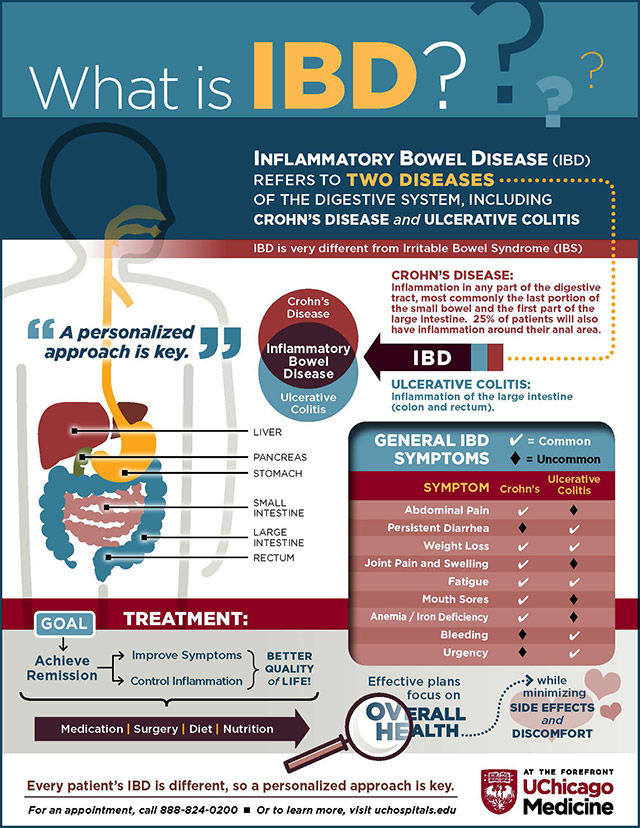What is IBD?
Inflammatory Bowel Disease (IBD) refers to conditions that cause bowel inflammation. The two most common diseases are Crohn’s Disease and Ulcerative Colitis. These diseases are separate from Irritable Bowel Syndrome (IBS). Though abdominal pain can occur for all three conditions, Crohn’s and Ulcerative Colitis can cause lasting damage to the intestines and digestive system, while IBS usually does not. Though there is not currently a cure for Inflammatory Bowel Disease, there are treatment options to control inflammation and reduce symptoms for an improved quality of life. This infographic provides an overview of symptoms, the differences between the two diseases, and some anatomical information.
In a month lacking in the wealth of health observances throughout the rest of the year, we thought we would have a Fact about a lesser-known disease: Inflammatory Bowel Disease!

Inflammatory Bowel Disease (IBD) refers to two diseases of the digestive system, including Crohn’s Disease and Ulcerative colitis. A Venn Diagram is shown with Crohn’s Disease and Ulcerative Colitis as the two circles. The overlapping portion is labeled Inflammatory Bowel Disease.
IBD is very different from Irritable Bowel Syndrome (IBS).
Crohn’s Disease
An inflammation in any part of the digestive tract, most commonly the last portion of the small bowel and the first part of the large intestine. 25% of patients will also have inflammation around their anal area.
Ulcerative Colitis
Inflammation of the large intestine (colon and rectum).
General IBD symptoms
- Abdominal pain is common for Crohn’s and Uncommon for Ulcerative Colitis
- Persistent Diarrhea is uncommon for Crohn’s and common for Ulcerative Colitis
- Weight loss is common for both diseases
- Joint Pain and swelling is common for Crohn’s and uncommon for Ulcerative Colitis
- Fatigue is common for both diseases
- Mouth sores and anemia/iron deficiency are common for Crohn’s and uncommon for Ulcerative Colitis
- Bleeding and Urgency are uncommon for Crohn’s and common for Ulcerative Colitis
A diagram of a human body shows the placement of the liver, pancreas, stomach, small intestine, large intestine, and rectum
Treatment: “a personalized approach is key.” The goal is to achieve remission by improving symptoms and controlling inflammation for a better quality of life!
Medication, surgery, diet, nutrition
Effective plans focus on overall health while minimizing side effects and discomfort]

